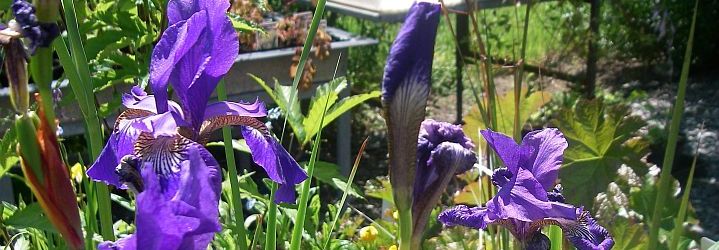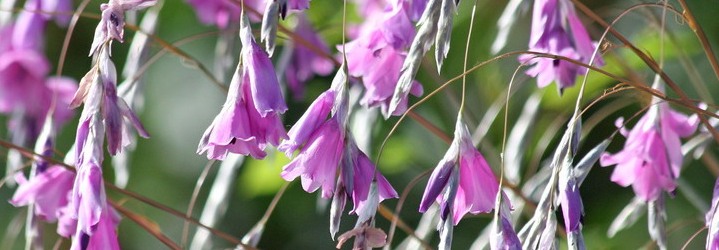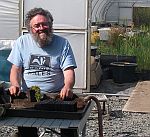Ken's top tips
October/November. This month I shall be mainly talking about Autumn pond maintenance.
May/June. This month I shall be mainly talking about water lilies and tadpoles!
During the intervening months, I have been mainly trying to put into practice
my previous tips! Never mind, ever onward and upward!
At this time of the year, the water lilies have started to flower. In a small pond, you can remove the older leaves, when they are past their prime and starting to die back. Don’t forget to look out for any snails, feeding on the leaves, that you may wish to keep.
Now is the time that you may have an infestation of aphids on the leaves and flowers. Spraying with insecticide is not advisable as this will harm the aquatic organisms. The easiest solution is to spray them off with your garden hose and scoop them up in a fine hand net. What you do with them after that is up to you. If you leave them in the water, they will just find their way back to the leaves and flowers. If you have fish, no problem. They will eat them.
After two or three years, your lily may have outgrown its pot. The rhizome’s growing point or points will creep over the edge of the aquatic basket, at which time the lily will need re-potting. We sell baskets for this purpose, if you want to do this yourself, or we can offer a re-potting service! With Ken’s secret recipes they will flourish! Ideally, re-potting is done at the beginning or towards the end of the growing season.
Now is the time to look out for the great diving beetle larvae if you have tadpoles as they use their pincers on the head to suck them dry. You can net and transfer them as they come to the surface to breathe. You can recognise them as they have a flattened head with a sharp curved pincer each side of the head, and the body which is opaque curves back and up behind the head.
The adults are also active predators and these will have flown into your pond if you have larvae. A great diving beetle adult is approximately 25mm long, will be free swimming under the water, coming up regularly to capture a bubble of air to breathe
Your tadpoles will start their life as herbivores and at some stage will become carnivores when they will require live food.(Or you can buy tadpole food for each of these stages.) The carnivorous stage requires a higher protein diet. If you haven’t overloaded your pond with too many tadpoles, (perhaps 2-3 per 4-5 litres of water is good),and you have lots of submerged aquatic vegetation, such as hornwort to provide the habitat for plenty of small animal life on which they browse, you will not have to supply any supplementary food.
If you have fish in your pond, except maybe sticklebacks, the only amphibian larvae which are likely to survive are toad tadpoles. The adult toads have warty poison glands in their skin which may make them unpalatable. I can only think that the tadpoles have poison glands too!
Some other predators of tadpoles are dragonfly nymphs (larvae), newts and birds.
So, it’s’ three to sow, two to grow, one to reap and one for the crow,’ or whatever that old saying says !
In the wild, animals that are heavily predated, with no parental care, produce lots of young so a few will survive to adulthood and sexual maturity when they can mate and start the cycle again.
Happy water gardening and enjoy your pond, large or small!
MARCH. This month I'll be mainly talking about algae!
If you have been enjoying the clarity of your pond over the winter months, BEWARE! Soon will be the season of green water and green slime. With the onset of longer daylight hours and warm sunshine, there will be blooms of unicellular algae (green water) and filamentous algae, i.e. blanket weed (green slime). The algal blooms also rely on lots of nutrients in the water to feed on. Firstly, don’t let your pond fill up with dead leaves (covering with a net over winter would help) and other decaying material from your pond plants. This needs to be removed as it is a source of nutrients. Remove as much as you can, putting back any living creatures that come out with it.
If possible, top up with rain water (no nutrients). Tap water will contain a lot of nutrients.
There are several angles of attack before the algae take a hold:
1. Organic barley straw in sleeves or baskets.
As it decays, it releases chemicals which inhibit algal growth. It does take several weeks of decay before it begins to work – so start early.
2. Fresh water mussels.
These filter out the algal cells which they use as food but they will not work on blanket weed once it has a hold.
3. Daphnia.
They will only survive when the water is warmer. They eat up unicellular algal cells.
4. Small fish.
I have found that small crucian carp remove blanket weed. Maybe it gets gobbled up when they are looking for bugs to eat. I have heard that chub are also good for clearing blanket weed in a pond, possibly for the same reason. The downside is, fish are not much good for wildlife in a pond, unless they are our native stickleback, as they will eat it. The only amphibians that will survive are toad tadpoles as fish do not appear to like the taste of them. Probably they have poison glands in the skin, like the adults. The fish must only rely on natural food. If you feed them, their waste products will only add to the nutrients in the water.
5. The stick method.
Curl the blanket weed around a stick. Remove and compost it.
6. A balanced plant ecosystem in your pond.
Have at least one third of your pond covered with plants with floating leaves. This stops sunlight reaching the algae so they cannot photosynthesise. Such plants are water lilies, water hawthorn, frogbit and water soldiers. Frogbit and water soldiers will also take up some nutrients from the water. Tall plants will also provide some shade.
Have plenty of oxygenating plants. The fact they produce oxygen has nothing to do with controlling algae. The fact is most are fast growing and take up nutrients, leaving less for the algae. With any of the oxygenators, if you have too much growth you can remove some of it and compost it or use as a mulch.
Hornwort is a good one. It floats around and provides shelter for aquatic organisms. Others are Lagarosiphon major (Elodea crispa), Canadian pondweed, Starwort, Myriophyllum species and water crowfoot, plus a few others.
I do not advise growing some oxygenators in earth ponds or large ponds as they can quickly become invasive and will be difficult to remove.
If anybody has any other interesting solution to share maybe they would let me know! thewatermargins@msn.com
Last month, FEBRUARY
The wildlife pond and amphibians
If you want to have amphibians in a wildlife pond, February, in this part of the world is the time to hunt for frog spawn to put into your pond. You will find it in shallow water, in clumps of individual balls of jelly stuck together with a black egg in the middle of the ball of jelly.
Toad spawn is laid later - in March, in deeper water and is laid in strings with the black eggs along the length of the string.
Only take a small amount of spawn, otherwise the tadpoles may devour all the available food in the pond.
Your pond should be planted well in advance and have aquatic life living in it as the tadpoles will initially graze on the plants before becoming carnivorous when they will require animal food in their diet. If in doubt, one can buy tadpole food from some retailers.
Never mix amphibians and fish unless the fish are our native sticklebacks, as the only amphibians left will be toad tadpoles. It appears that fish do not like the taste of these. If you want to keep fish, it is best to dig a separate pond.
Amphibian and Reptile conservation trust- for information and photographs of amphibians.
Business hours - 2024
NEW STOCK NOW IN !
Friday 10-4
Saturday 10-4
Sunday 10-4
Any other day appointment only.
For all enquiries for plant availability for 2024
Phone 01834831585 or email thewatermargins@msn.com
See News for details.





